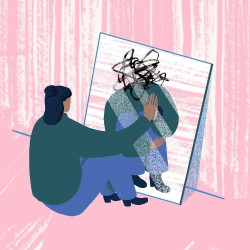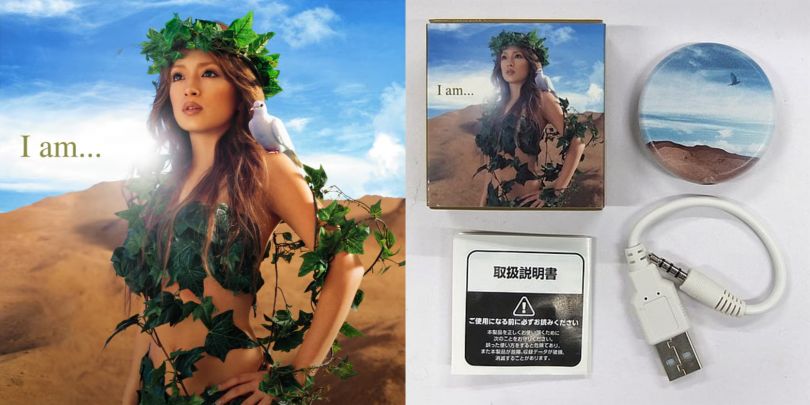
July 29, 2022
Music Rewind: The Artists and Tech of 2002
From pop hits and rock jams to MP3 wristwatches, here’s a flashback to a simpler time
Dial-up, portable CD holders stuffed into the car’s glove compartment, posters that came with your favorite artist’s new album. Music and the way we engage with it have changed dramatically over the past 20 years. While our world is filled with more conveniences than many of us could have imagined, it’s still difficult to not look back on this era with warm nostalgia. Since trends tend to repeat themselves, it’s worth delving into what music and technology was popular at the starting line of the digital era.
2002 started on a strong and hopeful note. Hamasaki Ayumi released her fourth album I Am… on the first day of the year; this album was both a sonic and thematic departure for the artist, incorporating heavy rock elements as backing to lyrics categorically more positive than her previous works. I Am… was an incredible success, selling 1.7 million copies during its first week.
The album was released digitally and on CD – as well as Playbutton. Playbutton is a type of portable album — barely an inch in diameter — that allows for the listener to plug in headphones and listen to the album without carrying around a CD player. Strangely enough, Playbuttons are still produced today!
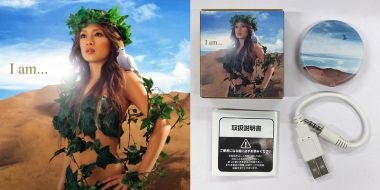
In tight competition with Hamasaki was the superstar Utada Hikaru, who still dominates Japanese music charts decades later. Her June 2002 release, Deep River, was the 3rd studio album for the artist and would overtake Hamasaki’s success to become not only the top album of the year but also ranked as eighth in all-time record sales in Japan.
The album plays across the pop genre spectrum, including electronic dance, soft rock and even a harpsichord club track — a sound that defines that period in the West. By the end of the year, Hamasaki took the top spot on the Oricon singles chart with “H,” which would be featured on her upcoming album rather than on I Am…. However, Deep River’s singles “Traveling,” “Sakura Drops” and “Hikari” took spots two, six and ten respectively.
Other notable pop releases included Korean star BoA’s debut Japanese album, Listen to My Heart, charting 12th by the end of the year and setting the foundation for her fruitful career in Japan. Girl group Morning Musume released their 4th album, 4th Ikimasshoi!, currently their second-highest selling record to date, and MISIA released a greatest hits album featuring the timeless ballad, “Everything.”
While 2002 saw the domination of female popstars, men made their mark in rock. Known for their blend of rock and rap, Dragon Ash released their 10th single, “Life Goes On.” This came nearly a year after their 4th album LILY OF DA VALLEY and incorporated rock instrumentals, a hip-hop-inspired beat (with characteristic vinyl scratches), and a mixture of rap and sung vocals. “Life Goes On” was a hit, putting the track 4th of best-selling singles for 2002. Rock band Glay released their 8th studio album Unity Roots and Family, Away (UR&FA); while the album researched #1 on the Oricon charts and the lead single “Way of Difference” closed the year at #5 on the singles chart, the album received a mixed reception. Rock took a backseat, with R&B, traditional Okinawan music and gospel serving as heavy influences.
Playbutton wasn’t the only novel technology to come out in 2002. Across the world over, companies were competing to find inventive ways to bring music to the masses in a more efficient and cost-effective way.
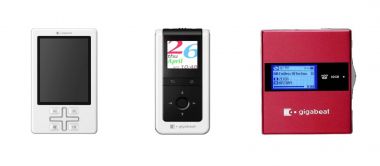
Toshiba’s GIGABEAT first arrived on the scene in June of 2002, a handheld music player with a screen display similar to cellphones of the era and boasting the capability to hold an estimated 1,000 (5GB) songs on its mobile disk. By adding tracks from one’s computer to a mobile disk, it was possible to curate extensive libraries to be played on a single device. It lasted 18 hours on a full charge and was the first in a series of GIGABEAT products.
Unfortunately for Toshiba, July of 2002 saw the unveiling of the 2nd generation iPod. Not only could the most basic model of the iPod hold over double what the GIGABEAT could, but the design was also far sleeker. The iPod didn’t require changing mobile disks to access more content like the Toshiba product did and utilized a larger, easier-to-navigate scroll wheel than the GIGABEAT.
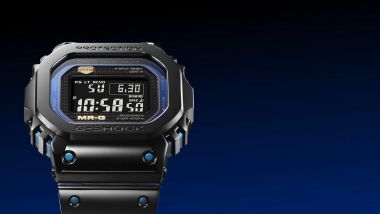
But for those who preferred more casual, on-the-go listening, there was another option: the wristwatch. Arguably the precursor to the Apple Watch, many Japanese companies were producing watch-cum-MP3 players. In 2002, the Casio G-SHOCK hit the market, allowing 32MB of music storage. It certainly wasn’t the 5GB the GIGABEAT offered, but enough for work commutes.
The days of rushing to the CD shop hoping the latest album wasn’t already sold out or searching for an MP3 player that fit the trending aesthetic are far behind us, but there’s a comfort in reminiscing on what was a less digitally connected world. Many of the artists from the early 2000s still make hit records, and music is even easier to access than ever. What new technologies will come into our lives in the next 20 years?





